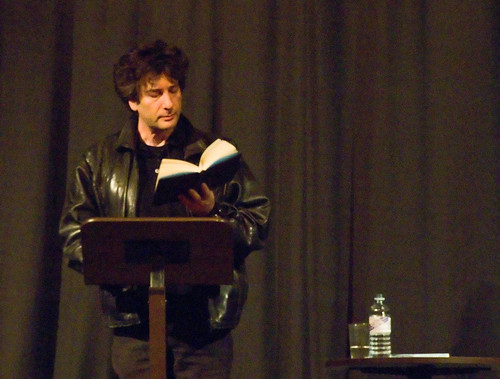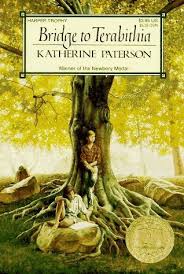 Source: https://blogger.googleusercontent.com/img/b/R29vZ2xl/AVvXsEgIDSjuRueqXMVTMe8YMvV5SxJoZ_wNTzD1MjSNca_HIS2QA1A0lTyFxEDgSYmyXmVcd6kFXU3SbhIUjSSba8v5cCHFpIeXVP6UPPjEwdzGyjs7G9U3spWeRlcofildHGe0vofb9i9TDeM/s1600/Diana+Wynne+Jones.jpg
Source: https://blogger.googleusercontent.com/img/b/R29vZ2xl/AVvXsEgIDSjuRueqXMVTMe8YMvV5SxJoZ_wNTzD1MjSNca_HIS2QA1A0lTyFxEDgSYmyXmVcd6kFXU3SbhIUjSSba8v5cCHFpIeXVP6UPPjEwdzGyjs7G9U3spWeRlcofildHGe0vofb9i9TDeM/s1600/Diana+Wynne+Jones.jpgMonday, June 20, 2011
What Diana Wynne Jones Meant to Me
 Source: https://blogger.googleusercontent.com/img/b/R29vZ2xl/AVvXsEgIDSjuRueqXMVTMe8YMvV5SxJoZ_wNTzD1MjSNca_HIS2QA1A0lTyFxEDgSYmyXmVcd6kFXU3SbhIUjSSba8v5cCHFpIeXVP6UPPjEwdzGyjs7G9U3spWeRlcofildHGe0vofb9i9TDeM/s1600/Diana+Wynne+Jones.jpg
Source: https://blogger.googleusercontent.com/img/b/R29vZ2xl/AVvXsEgIDSjuRueqXMVTMe8YMvV5SxJoZ_wNTzD1MjSNca_HIS2QA1A0lTyFxEDgSYmyXmVcd6kFXU3SbhIUjSSba8v5cCHFpIeXVP6UPPjEwdzGyjs7G9U3spWeRlcofildHGe0vofb9i9TDeM/s1600/Diana+Wynne+Jones.jpgSaturday, June 18, 2011
Reverence for Fairy Tales
To get psyched for revising the last three chapters of this fantasy novel that is a tribute to fairy tales and Daphne du Maurier, I read Grimm’s Fairy Tales from cover to cover. The edition also came with a helpful list of footnotes denoting the different version of each tale, as well as possible sources, but my real point when reading was something that every adult realizes when reading fifty to sixty short stories meant for children’s bedtime:
Most are completely ridiculous!
As mentioned in my last entry, Sarah Beth Durst has written several blog posts going through certain stories line by line and commenting on how good, bad, or horrific they were. Ms. Durst read these stories for her novel Into the Wild, in which real people have to act out fairy tales for centuries if they get caught in the titular plant growth. When the Wild gets loose, Rapunzel’s daughter Julie has to work fast to tame it before it takes over her hometown. When it gets loose again in Out of the Wild, Julie has to worry about the same problem while traveling across the US on a broomstick.
Popular culture has also caught onto the trend of mocking the Brothers Grimm, Charles Perrault, and Hans Christen Andersen; Dreamworks gave us the Shrek movies, while Disney attempted a self-parody with Enchanted. Even Gail Carson Levine, whose novel Ella Enchanted was critically acclaimed and heart rendering, wrote several short novellas that parodied “Cinderella,” “Sleeping Beauty,” and “The Princess and the Pea.”
On the other side of the spectrum, Ms. Durst wrote Ice, a gorgeous retelling of “The Sun, the Moon, and the North Wind” set in the Arctic Circle with polar bears, shamans, and creepy deities. Juliet Marillier gave us Wildwood Dancing, which makes “The Twelve Dancing Princesses” look sugary sweet in comparison; I would not have read it if my friend Margaret had not recommended Ms. Marillier. (Thanks, Margaret!) Walt Disney Corporation managed to infuse some of the most ridiculous tales like “Sleeping Beauty” and “Cinderella” with lovable characters, monstrous villains, humor, and princess protagonists that did not annoy the viewer in the least.
There is a reason, however, why we feel drawn to fairy tales, whether or not we parody them or depict them in a somber light; I feel drawn to them because fairy tales were my security blanket. Azar Nafisi admitted the same thing in her book Reading Lolita in Tehran: fairy tales may have happy endings, but they also have pretty monstrous obstacles. Such a structure is reflected in the best stories, whether they are complex novels or simple cartoon shorts; readers like conflict, and they like giant monsters that can be defeated.
“Cinderella,” for example, has a stepmother and two stepsisters who will do anything to keep their ash girl from being normal; the Disney version takes that dynamic to the extreme. The two girls blame Cinderella for things that go wrong, load her with work so she can’t get ready for the king’s ball, and finally rip up her handmade ball gown. The stepmother then proceeds to sabotage Cinderella’s chance of trying on the glass slipper by locking her in her room and making the slipper shatter just as she’s about to try it on. It doesn’t help that she has the scariest voice in history, and she’s pretty much what every teenage girl would not want to have: an unloving authority figure who will never give you power. On top of that, Cinderella’s father died when she was just a little girl; that is traumatic for any child, especially when the surviving parent is not sympathetic.
Most fairy tales thus, in addition to providing such an obstacle like a deal with the Devil or a toady innkeeper who keeps stealing his customers’ magical tools, add a happy ending and helpful friends to deal with the monstrous quality. Sometimes this can play for dark humor; about three or four Grimm’s fairy tales involve the hero causing an apocalypse that leaves him the sole ruler of a kingdom (seriously). Others involve the Devil getting cheated, but the hero is not allowed to enter heaven either, so they wander between heaven and hell as a restless ghost. Please note that this happens when the hero is a guy, not a girl; the girl usually marries a prince who rescues her from burning at the stake or an unhappy life with her stepsisters. The king in these stories tends to execute the stepmother and stepsisters in violent manners, so the blood and gore is still presented.
The other reverence for fairy tales that we find is that they can be easily retold, as I’ve shown with the above examples, while keeping the monstrous obstacles and happy ending. We can take out the parts we don’t like, such as Cinderella’s fairy godmother (please stop making fairy godmothers evil), and modify it to suit our needs, as Disney has done. That Grimm’s Fairytales still exists is living proof that even if we don’t like princes who kill everyone to become happy, we do like it when characters receive happy endings after traumatic experiences. We simply change the rules as we go along.
Monday, May 23, 2011
Why Your Dearest Reader is Important

Saturday, February 26, 2011
The Sound of Your Story
 Source: http://farm4.static.flickr.com/3192/2982122055_91d6088f9a.jpg
Source: http://farm4.static.flickr.com/3192/2982122055_91d6088f9a.jpg

Wednesday, February 2, 2011
Margaret Mitchell and Her Impact on America
 Source: http://www.picturehistory.com/images/products/1/1/3/prod_11358.jpg
Source: http://www.picturehistory.com/images/products/1/1/3/prod_11358.jpgTuesday, January 11, 2011
Rudyard Kipling in Retrospect:
Sunday, January 9, 2011
Great Literary MacGuffins, Part Two: More Great Examples
 One of the best Harry Potter books of the series, and it's not hard to see why. The Chamber of Secrets becomes the Literary MacGuffin as the Heir to Slytherin uses it to petrify Muggle-born students, a ghost and a cat. Harry, already suspected of being the Heir, investigates the real attacker's identity while fending off a house elf's attempts to "save his life." I love how the American cover illustrates the climatic scene, where Fawkes carries Harry, Ginny, Ron and Lockhart out of the Chamber, because it's vivid and colorful. Chamber of Secrets may not be warm and fuzzy, but it needed a happy cover.
One of the best Harry Potter books of the series, and it's not hard to see why. The Chamber of Secrets becomes the Literary MacGuffin as the Heir to Slytherin uses it to petrify Muggle-born students, a ghost and a cat. Harry, already suspected of being the Heir, investigates the real attacker's identity while fending off a house elf's attempts to "save his life." I love how the American cover illustrates the climatic scene, where Fawkes carries Harry, Ginny, Ron and Lockhart out of the Chamber, because it's vivid and colorful. Chamber of Secrets may not be warm and fuzzy, but it needed a happy cover.